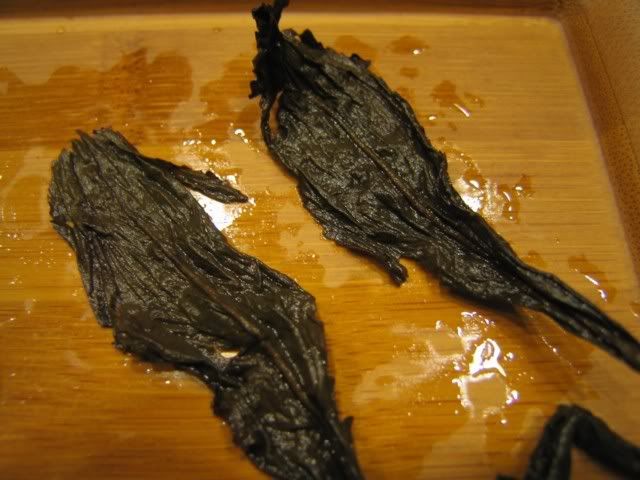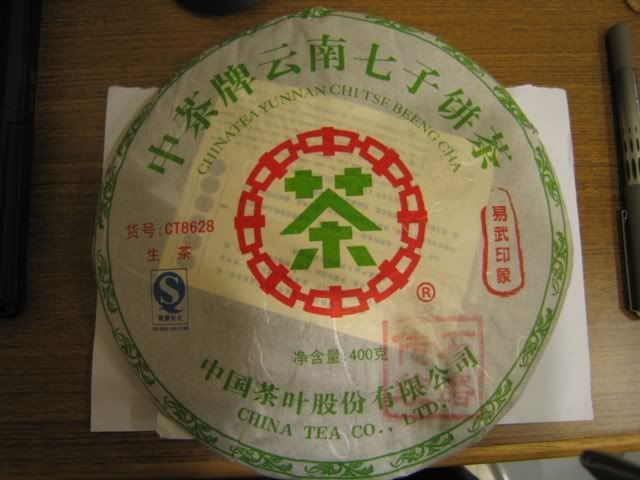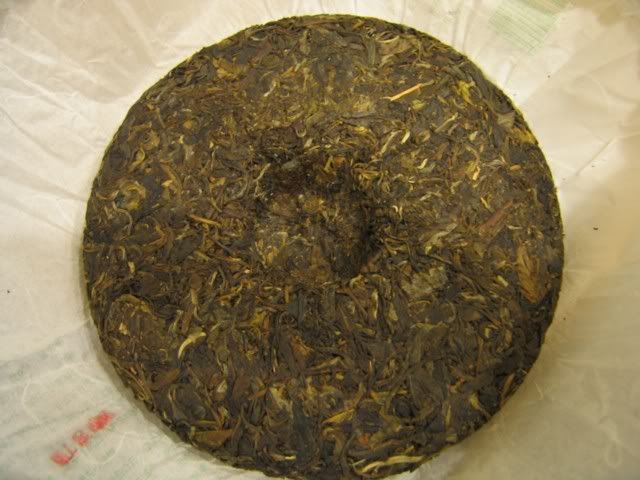Action Jackson has been in town for a few days, but it was only yesterday that we finally met, mostly thanks to the wonderful typhoon. We agreed that today we’ll go tea shopping, as she will be leaving tomorrow.
Since I don’t know where we might find decent tea shops, I decided to take my chances with the Yongkang area, since Corax said on Chadao that it has quite a few teashops. I figured it won’t hurt to try.
After having a vegetarian lunch, we eventually made our way to a shop that looked interesting enough. We ended up spending the rest of the afternoon there, not having found time to go anywhere else.
After browsing around a little, we settled down for some tea tasting. The first we tried was a 2000 Xiaguan tuo. I didn’t quite know what to expect, but it looks dry stored. It turned out quite decent — much mellower than a new Xiaguan tea, sweet, fragrant, still youngish and not much like an older puerh. 6-7 years isn’t that much for a small tuo, and it shows. Not too expensive either, so perhaps it’s worth an investment.
After going through 10+ infusions, which still hasn’t exhausted the tea, we went on to a Mengku “Pristine Forest” cake from 2005. Special order, so the storekeep says. It was one of those “wild wild” teas, darker in colour and …. weird in taste. I don’t find those teas very attractive, preferring more orthodox tastes. We had a few infusions of this when some Japanese tourists came in and interrupted proceedings.
After the tourists came and went (they bought a bunch of Taiwan oolong) we had a 1998 Menghai tuo. This one’s obviously weaker than the Xiaguan, but the flavours are of deeper tones — two years of storage, as well as differences in material and worksmanship, has done something to the tea. It brews a darker liquor, a little rougher on the tongue, but it didn’t last as long as the Xiaguan. I think the Xiaguan is a superior tea, quality wise, but which one you prefer depends greatly on what you’re looking for.
We then had a 80s 7542, which was quite delightful. I should figure out how much it costs, because if it’s not too pricey, I might look to buy a few for future consumption. It was beautifully stored — certainly some “wet” storage at some point, but it has the nice, sweet taste of the Traditional Character Zhongcha cake sample that YP gave me, and which I dearly love. Slight differences, as they’re from different factories, but overall the general characteristics are quite similar. The liquor is a gorgeous amber, clear, robust, and flavourful. If I can afford it, I will definitely get it.
She gave us a few cups of a 70s tea that she brewed yesterday, and which is still a bit sweet and mellow to drink. By this time, however, we were really quite full with tea, and with her next appointment due, Action Jackson had to go, so off we went, with two tuos in hand for her to bring back to Shanghai. It was a pretty good day.







Yeah whisky prices have been leaking too, as well as luxury watches. I wrote a post maybe a decade ago…